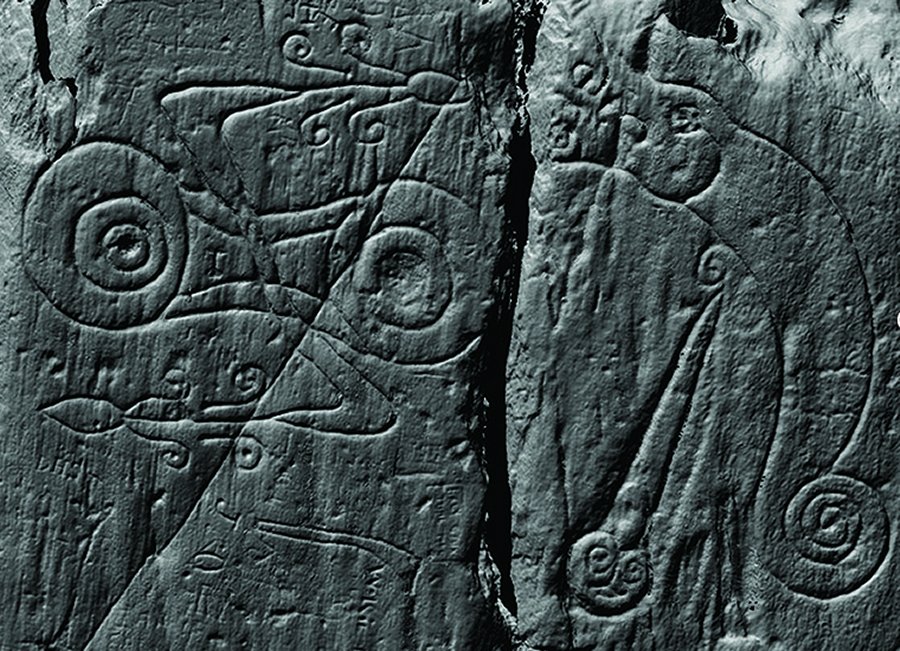MessageToEagle.com – Archaeologists have found traces of the lost kingdom of Rheged from the Dark Ages.
During excavations at the Trusty’s Hill Fort in Galloway, Scotland scientists were initially investigating Pictish carvings. However, they soon discovered evidence the site might in fact have been the royal seat of the sixth century kingdom of Rheged built by local Britons around A.D. 600.

Rheged is one of the most mysterious kingdoms of Dark Age Britain. It’s location has been very difficult to determine. It was previously thought the Kingdom Of Rheged was somewhere in south-west Scotland or Cumbria, a county in north-west England.
However, Dr. Christopher Bowles, co-director of the excavation work in Dumfries and Galloway, said everything indicates the Dark Age kingdom was in Galloway.
“The new archaeological evidence from Trusty’s Hill enhances our perception of power, politics, economy and culture at a time when the foundations for the kingdoms of Scotland, England and Wales were being laid.
The 2012 excavations show that Trusty’s Hill was likely the royal seat of Rheged, a kingdom that had Galloway as its heartland.
This was a place of religious, cultural and political innovation whose contribution to culture in Scotland has perhaps not been given due recognition,” Dr. Christopher Bowles said.
Researchers explain this was an accidental discovery. There are several, unique Pictish symbols carved on to the bedrock at the Trusty’s Hill. The Galloway Picts Project was launched in 2012 to recover evidence for the archaeological context of these carvings.
As MessageToEagle.com has mentioned in the article “Inchbrayock Stone: Pictish Samson Stone Carved With Biblical Symbols And Scenes” the Picts were an Iron Age society that existed in Scotland from ca AD 300–843. Not much is known about the mysterious Picts and yet, they played a vital role in the history of Scotland. These brave and determined people repelled the conquests of both Romans and Angles and won one of the most important battles in Scottish history.
See also:
Stunning Reconstruction Of Caterthun Iron Age Forts In The Grampian Mountains, Scotland
Picts: Facts And History About Mysterious People Of Northern Scotland
Dandaleith Stone: Scotland’s Rare Symbol Stone Of The Picts – Will It Be Deciphered Now?
Other than a copy of the Picts’ King list, they left no written record of themselves. The Picts used mysterious symbols that still haven’t been properly deciphered and their enigmatic language is now extinct. The carved stones the Picts left behind are today known as ‘Pictish Symbol Stones’.
Obviously, scientists want to learn as much as possible about Pictish symbols and carvings, but sometimes, while looking for one thing, one discovers something else that is also very interesting.
This is exactly what happened at the excavations at Trusty’s Hill site.
Trusty’s Hill is an early medieval fort at Gatehouse of Fleet, Dumfries and Galloway. The hillfort comprises a fortified citadel defined by a vitrified rampart around its summit, with a number of enclosures looping out along lower-lying terraces and crags. The approach to its summit is flanked on one side by a circular rock-cut basin and on the other side by Pictish Symbols carved on to the face of a natural outcrop of bedrock. This Pictish inscribed stone is unique in Dumfries and Galloway, and southern Scotland, and has long puzzled scholars as to why the symbols were carved so far from Pictland and even if they are genuine. The Galloway Picts Project, launched in 2012, aimed to recover evidence for the archaeological context of the inscribed stone, but far from validating the existence of Picts in this southerly region of Scotland, the archaeological context instead suggests that the carvings relate to a royal stronghold and place of inauguration for the local Britons of Galloway around AD 600. Examined in the context of contemporary sites across southern Scotland and northern England, the archaeological evidence from Galloway suggests that this region may have been the heart of the lost Dark Age kingdom of Rheged, a kingdom that was in the late sixth century pre-eminent amongst the kingdoms of the north. The new archaeological evidence from Trusty’s Hill enhances our perception of power, politics, economy and culture at a time when the foundations for the kingdoms of Scotland, England and Wales were being laid. Read more
The Kingdom Of Rheged ruled by king, Urien of Rheged and his son Owain was inhabited by Britons, who spoke a form of ancient Welsh. Gathering warriors from other hillforts in south-west Scotland inhabited at this time, such as Tynron Doon, Urien and his warband led raids against the neighboring kingdoms of their fellow Britons and the newcomers to the east, the Angles of Bernicia.
The history behind the kingdom of Rheged and the excavations at Trusty’s Hill Fort is truly fascinating.
Ronan Toolis, who led the excavation has together with Christopher Bowles published a new book which details their findings.
MessageToEagle.com
Expand for references






